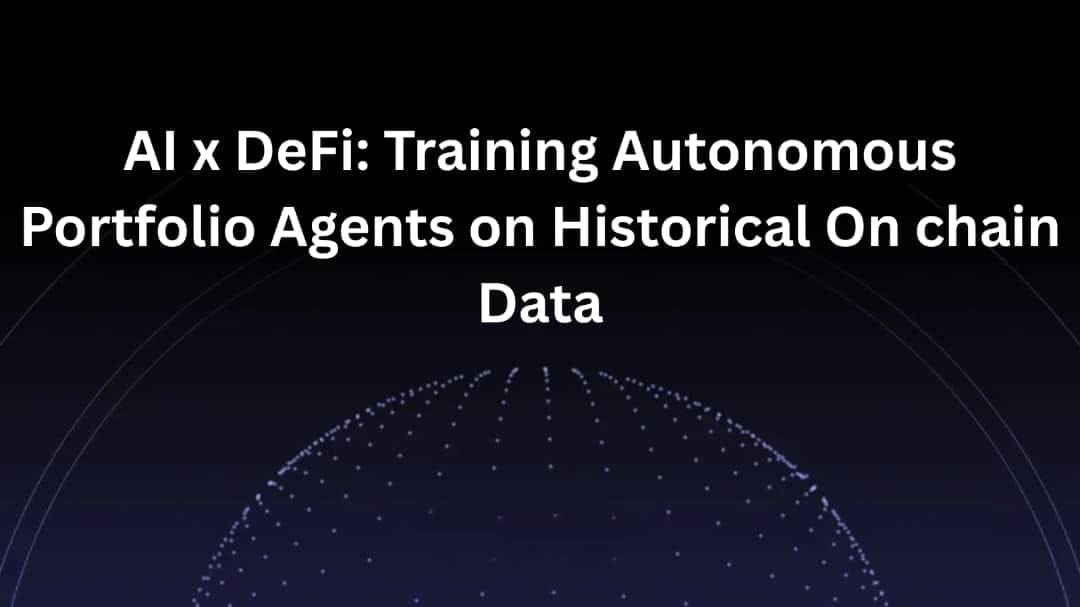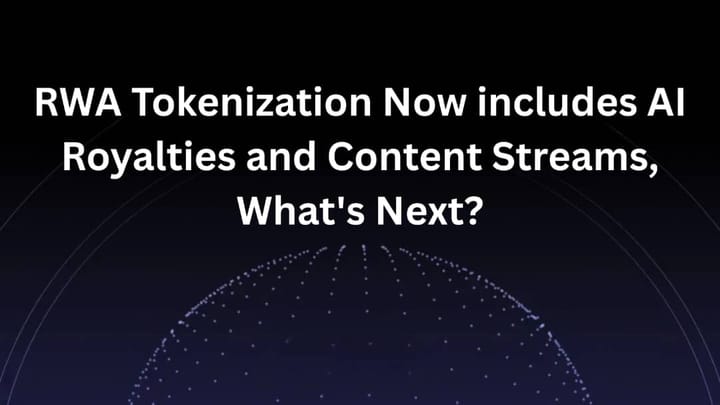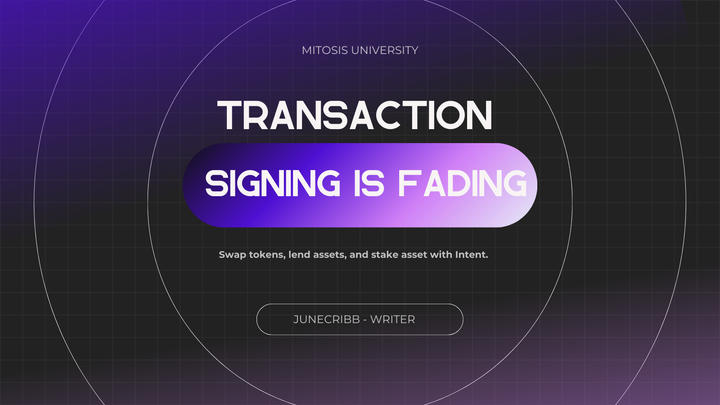AI x DeFi: Training Autonomous Portfolio Agents on Historical Onchain Data

Introduction
The intersection of artificial intelligence (AI) and decentralized finance (DeFi) is one of the most exciting developments in the financial technology landscape. As the DeFi ecosystem continues to grow, the need for sophisticated tools to manage assets and optimize trading strategies has become increasingly apparent. Autonomous portfolio agents, powered by AI, are emerging as a solution to this challenge. These agents leverage historical on-chain data from decentralized exchanges (DEX), lending platforms, and liquid staking tokens (LST) to make informed decisions about asset management. This article delves into the intricacies of training these AI agents, the methodologies employed, the benefits they offer, the challenges they face, and the future of AI in the DeFi space.
1. Understanding Decentralized Finance (DeFi)
1.1 What is DeFi?
Decentralized finance (DeFi) refers to a financial ecosystem built on blockchain technology that aims to recreate and improve upon traditional financial systems without the need for intermediaries. DeFi applications allow users to lend, borrow, trade, and earn interest on their assets in a decentralized manner. Key components of the DeFi ecosystem include:
- Decentralized Exchanges (DEX): Platforms that facilitate peer-to-peer trading of cryptocurrencies without a central authority.
- Lending Platforms: Services that allow users to lend their assets to others in exchange for interest.
- Liquid Staking Tokens (LST): Tokens that represent staked assets, allowing users to earn rewards while maintaining liquidity.
1.2 The Role of On-Chain Data
On-chain data refers to the information recorded on the blockchain, including transaction histories, smart contract interactions, and user behaviors. This data is crucial for training AI agents, as it provides a comprehensive view of market dynamics and user activities. By analyzing historical on-chain data, AI agents can identify patterns, predict market trends, and make informed decisions.
2. Autonomous Portfolio Agents: An Overview
2.1 Definition and Functionality
Autonomous portfolio agents are AI-driven systems designed to manage cryptocurrency portfolios without human intervention. These agents utilize machine learning algorithms to analyze vast amounts of historical data, enabling them to execute trades, rebalance portfolios, and optimize asset allocation based on predefined strategies.
2.2 Objectives of Autonomous Portfolio Agents
The primary objectives of autonomous portfolio agents include:
- Maximizing Returns: By leveraging historical data and predictive analytics, these agents aim to achieve the highest possible returns on investments.
- Minimizing Risks: AI agents can identify potential risks and adjust strategies accordingly, providing a safety net for investors.
- Enhancing Efficiency: Automation allows for 24/7 trading capabilities, reducing the need for constant human oversight.
3. Training Methodologies for AI Agents
1. Data Sources
The effectiveness of AI agents largely depends on the quality and quantity of data used for training. Key data sources include:
- Historical Transaction Data from DEX: This data includes information about trades, liquidity pools, and market depth, providing insights into market behavior.
- Lending Activity Metrics: Data on interest rates, loan volumes, and borrower behaviors helps agents understand lending dynamics.
- Performance Data from Liquid Staking Tokens: Information on staking rewards, token price movements, and liquidity can inform investment strategies.
2. Machine Learning Techniques
To train autonomous portfolio agents, various machine learning techniques are employed:
- Supervised Learning: This technique involves training models on labeled datasets, allowing agents to predict market trends based on historical performance. For example, an agent might learn to identify bullish or bearish trends based on past price movements.
- Reinforcement Learning: In this approach, agents learn by interacting with the environment and receiving feedback in the form of rewards or penalties. This method is particularly useful for developing adaptive trading strategies that can respond to real-time market conditions.
- Natural Language Processing (NLP): NLP techniques can be used to analyze sentiment from social media, news articles, and other textual data sources. By understanding market sentiment, AI agents can make more informed decisions about asset allocation.
3. Data Preprocessing
Before training, the collected data must undergo preprocessing to ensure its quality and relevance. This includes:
- Data Cleaning: Removing duplicates, correcting errors, and handling missing values.
- Normalization: Scaling data to a standard range to improve model performance.
- Feature Engineering: Creating new features that capture important aspects of the data, such as volatility indicators or moving averages.
4. Benefits of AI in DeFi
1. Enhanced Decision-Making
AI agents can process vast amounts of data quickly, leading to more informed trading decisions. By analyzing historical trends and real-time data, these agents can identify profitable opportunities that may be overlooked by human traders.
2. Automation
The automation of trading and portfolio management reduces the need for constant human oversight. This allows investors to focus on strategy development rather than day-to-day operations. AI agents can execute trades 24/7, taking advantage of market fluctuations at any time.
3. Risk Management
AI can identify potential risks and adjust strategies accordingly. For example, if an agent detects a sudden drop in the price of a particular asset, it can automatically rebalance the portfolio to minimize losses. This proactive approach to risk management is crucial in the volatile world of cryptocurrency.
4. Improved Liquidity
By utilizing AI agents, DeFi platforms can enhance liquidity in their markets. These agents can provide liquidity to DEXs by automatically placing buy and sell orders based on market conditions, ensuring that users can execute trades without significant slippage.
5. Challenges and Considerations
1. Data Privacy
As AI agents rely on historical on-chain data, ensuring data privacy is paramount. While blockchain technology is inherently transparent, sensitive information must be protected to maintain user trust. Developers must implement robust security measures to safeguard user data.
2. Scalability
The need for robust infrastructure to handle complex computations on the blockchain is a significant challenge. As the number of users and transactions increases, AI agents must be able to scale effectively to maintain performance.
3. Ethical Guidelines
The responsible use of AI in financial markets is essential. Developers and stakeholders must establish ethical guidelines to prevent manipulation, ensure transparency, and protect users from potential harm.
4. Market Volatility
The cryptocurrency market is known for its volatility, which can pose challenges for AI agents. While these agents can analyze historical data, sudden market shifts may lead to unexpected outcomes. Continuous monitoring and adaptation are necessary to mitigate these risks.
6. Future of AI in DeFi
1. Investment Trends
Significant capital is flowing into AI agent projects, indicating strong investor confidence. Venture capital firms and institutional investors are increasingly recognizing the potential of AI in DeFi, leading to a surge in funding for innovative projects.
2. Market Predictions
Analysts forecast that AI-driven solutions will surpass traditional DeFi applications in user engagement and capital attraction. As more users seek automated solutions for asset management, the demand for AI agents is expected to grow.
3. Innovative Applications
The potential for AI to create new financial products and services is vast. For example, AI agents could develop personalized investment strategies based on individual risk profiles, or they could create dynamic lending protocols that adjust interest rates based on real-time market conditions.
4. Integration with Traditional Finance
As AI and DeFi continue to evolve, the integration of these technologies with traditional finance is likely. Financial institutions may adopt AI-driven DeFi solutions to enhance their offerings, leading to a more interconnected financial ecosystem.
7. Case Studies of AI in DeFi
Example 1: Yearn Finance
Yearn Finance is a prominent DeFi platform that utilizes AI algorithms to optimize yield farming strategies. By analyzing historical data and market conditions, Yearn’s AI agents can automatically allocate user funds to the most profitable liquidity pools, maximizing returns while minimizing risks.
Example 2: Aave
Aave, a decentralized lending platform, employs AI to enhance its risk assessment processes. By analyzing borrower behavior and market trends, Aave’s AI agents can adjust interest rates dynamically, ensuring that the platform remains competitive while managing risk effectively.
Example 3: dHEDGE
dHEDGE is a decentralized asset management platform that allows users to invest in portfolios managed by AI agents. These agents analyze historical performance data and market conditions to create optimized investment strategies, providing users with a hands-off approach to asset management.
Conclusion
The integration of AI and DeFi is still in its early stages, but the potential for growth and innovation is immense. Autonomous portfolio agents are poised to revolutionize the way investors manage their assets, offering enhanced decision-making, automation, and risk management capabilities. As technology evolves, these agents will play a crucial role in shaping the future of decentralized finance.
The challenges of data privacy, scalability, and ethical considerations must be addressed to ensure the responsible use of AI in financial markets. However, with significant investment trends and innovative applications on the horizon, the future of AI in DeFi looks promising.



Comments ()